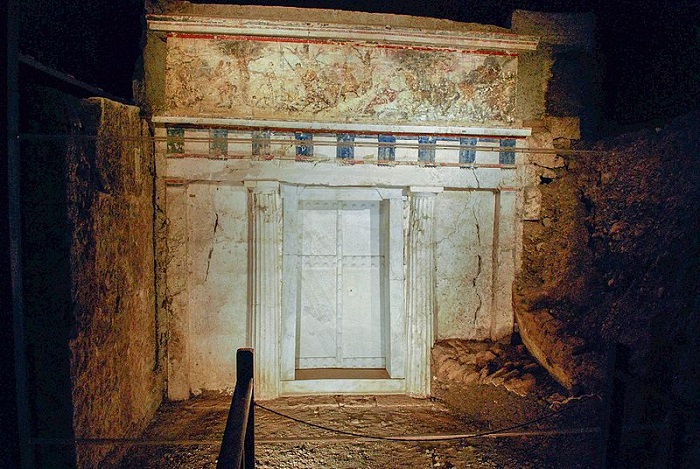
Greece marks on Sunday World Heritage Day, also known as the International Day for Monuments and Sites, offering free access to the country’s numerous archaeological sites.
The World Heritage Day Day was proposed by the International Council on Monuments and Sites (ICOMOS) on 18 April 1982 and approved by the General Assembly of UNESCO in 1983.
The aim is to promote awareness about the diversity of cultural heritage of humanity, their vulnerability and the efforts required for their protection and conservation.
Every year, a theme is proposed for the day which guides the celebrations and the many activities that ICOMOS National and International Scientific Committees and by other bodies.
This year, the theme is entitled “Complex Pasts: Diverse Futures”.
The UNESCO website explains the history of a place can involve many points of view. The conservation of cultural heritage requires careful examination of the past, and its practice demands provision for the future.
In recent years, debates on certain narratives, and particular stories over others, have come to the forefront. Addressing difficult and often contested histories involves complex conversations with different stakeholders, avoiding biased views and interpretations of the past.
Acknowledging global calls for greater inclusion and recognition of diversity, this day invites all of us to reflect on, interpret and review existing narratives.
World Heritage Sites in Greece
Greece has 18 World Heritage sites inscribed on the World Heritage List of UNESCO.
The first site added to the list was the Temple of Apollo Epicurius at Bassae, in 1986.
The next two sites listed were the Archeological site of Delphi and the Acropolis of Athens, in the following year.
Five sites were added in 1988, two in 1989 and 1990 each, one in 1992, one in 1996, two in 1999, and one in 2007. The most recent site added was the Archaeological Site of Philippi, in 2016.
On parenthesis is the date the particular site was included in the list:
- Acropolis, Athens (1987)
- Archaeological Site of Aigai (modern name Vergina) (1996)
- Archaeological Site of Delphi (1987)
- Archaeological Site of Mystras (1989)
- Archaeological Site of Olympia (1989)
- Archaeological Site of Philippi (2016)
- Archaeological Sites of Mycenae and Tiryns (1999)
- Delos (1990)
- Medieval City of Rhodes (1988)
- Monasteries of Daphni, Hosios Loukas and Nea Moni of Chios (1990)
- Old Town of Corfu (2007)
- Paleochristian and Byzantine Monuments of Thessaloniki (1988)
- Pythagoreion and Heraion of Samos (1992)
- Sanctuary of Asklepios at Epidaurus (1988)
- Temple of Apollo Epicurius at Bassae (1986)
- The Historic Centre (Chorá) with the Monastery of Saint-John the Theologian and the Cave of the Apocalypse on the Island of Pátmos (1999)
- Meteora (1988)
- Mount Athos (1988)
In addition there is also a tentative list of sites that are under consideration to be included. They are:
- Late Medieval Bastioned Fortifications in Greece (2014)
- National Park of Dadia – Lefkimi – Souflion (2014)
- Ancient Lavrion (2014)
- Petrified Forest of Lesvos (2014)
- Archaeological site of Ancient Messene (2014)
- Minoan Palatial Centres (Knossos, Phaistos, Malia, Zakros, Kydonia) (2014)
- Archaeological site of Nikopolis (2014)
- The broader region of Mount Olympus (2014)
- The Area of the Prespes Lakes: Megali and Mikri Prespa which includes Byzantine and post-Byzantine monuments (2014)
- Gorge of Samaria National Park (2014)
See all the latest news from Greece and the world at Greekreporter.com. Contact our newsroom to report an update or send your story, photos and videos. Follow GR on Google News and subscribe here to our daily email!



